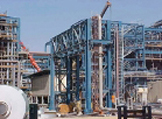Painting Terms

Learn Painting Terms - L
Browse Our Painting Terms
Lacquer - A material based on cellulose compounds that has a glossy finish and dries rapidly by evaporation.
Lacquer Thinner - Solvent such as ethyl alcohol, ethyl acetate and toluene that is used for thinning or cleaning up lacquer.
Laitance - A chalky white compound composed of salt and lime which rises to the surface of poorly finished concrete as moisture evaporates. This substance prevents paint adhesion.
Lambs Wool Paint Roller Covers - They are perfect solutions for water-based paints and primers. They hold more paint than synthetic covers and also and produce less splatter.
Lampblack - A pigment used in paint and ink derived from a fine soot produced by the incomplete combustion of oils and other forms of carbon.
Lap - Area where a coat of paint or other coating extends over an adjacent fresh coat. The painter's objective is to make this juncture without visible lap marks.
Lapping - Wet and dry layers overlap during painting. Usually caused by - inadequate stirring and improper thinning; too much heat or wind during application; extremely porous surface; or painting too large an area at one time.
Large-Framed Industrial Roller - They range fro 12 to 18 inches. These use an adjustable frame made of metal or plastic to hold the roller cover. They are used for large large painting projects. By utilizing this industrial roller with an extension pole , the working time can be reduced in half.
Latex - A milky white liquid containing resins and proteins, present in rubber trees, milkweed and poppies. It's the basis of rubber and an ingredient in some adhesives and paints.
Latex Emulsions - Rubber or any synthetic resin dispersed in water. The best known is poly vinyl acetate (PVA).
Latex Paints - Water-base paints, sometimes called vinyl or acrylic paints, which can be cleaned up and thinned with soap and water.
Leaching - Blotchy glossy water soluble spots on latex paints. Usually caused by painting in cold humid conditions. If moisture collects on fresh paint before it has thoroughly dried, leaching may appear.
Lead - A metal, previously used as a pigment in paints. Discontinued in the early 1950s by industry consensus standard, and banned by the Consumer Products Safety Commission in 1978 because of its toxicity.
Lead Carbonate - A white lead pigment used in metal primer.
Lead Drier - Lead compounds which accelerate the hardening of drying oils in paint.
Lead Oxide - A pigment used as a rust inhibitor, composed of red lead and lead monoxide.
Lead Paint - Any paint in which white lead is used as a base. Leaded zinc oxide White pigments which are mixtures of zinc oxide and basic lead sulfate, used as a primer.
Leveling - The smoothing out or flow of the paint liquid being applied.
Lift - Ability of the bristles or filament to hold paint.
Lifting - The softening and penetration of a previous film by solvents in the paint being applied over it, resulting in raising and wrinkling.
Light Reflectance Value (LRV) - The amount of light reflected from a painted surface
Light Fastness - No loss of color due to exposure to light, heat or weathering.
Linoleum Varnish - A highly flexible and elastic varnish.
Linseed Oil - A yellowish drying oil extracted from flaxseed, used as a vehicle in many oil-based paints, printer's ink and linoleum.
Lint-Free Roller - A fabric roller, designed not to "shed" lint, that is suitable for fine finishes and/or alkyd paint.
Liquid Driers - Solution of soluble driers in organic solvents.
Liquid Sander, Liquid Sandpaper - Liquid chemical used to degloss a painted surface in order to improve adhesion of an applied coating.
Liquid Wood Filler - A thin varnish used to coat and fIll the tight grained hardwoods.
Litharge - A pale yellow or brown pigment and drier used in vitreous enamels. Also called lead monoxide.
Lithopone - Zinc sulfide and barium sulfate used as a white paint pigment.
Liter - A metric volume measurement equal to a little less than one imperial quart.
Livering - The process of paint thickening to the consistency of liver.
Long Oil - A high ratio of oil to resin in a varnish.
Long Oil Varnish - An oleoresinous varnish, other than an alkyd, containing at least 2-112 parts of oil to one part of resin. It dries slower than short oil varnish and results in a tough but flexible finish.
Long Oil Alkyd - An alkyd resin containing more than 60% oil as a modifying agent.
Low Volatile Organic Compound Coating Material - A coating material that contains little or no volatile organic compounds.
Lump Sum Contract - A contract that sets forth a specific amount as the total payment for performance of the contract. Also called a stipulated sum agreement.
Call Now - 1.800.354.9165 - Toll Free









